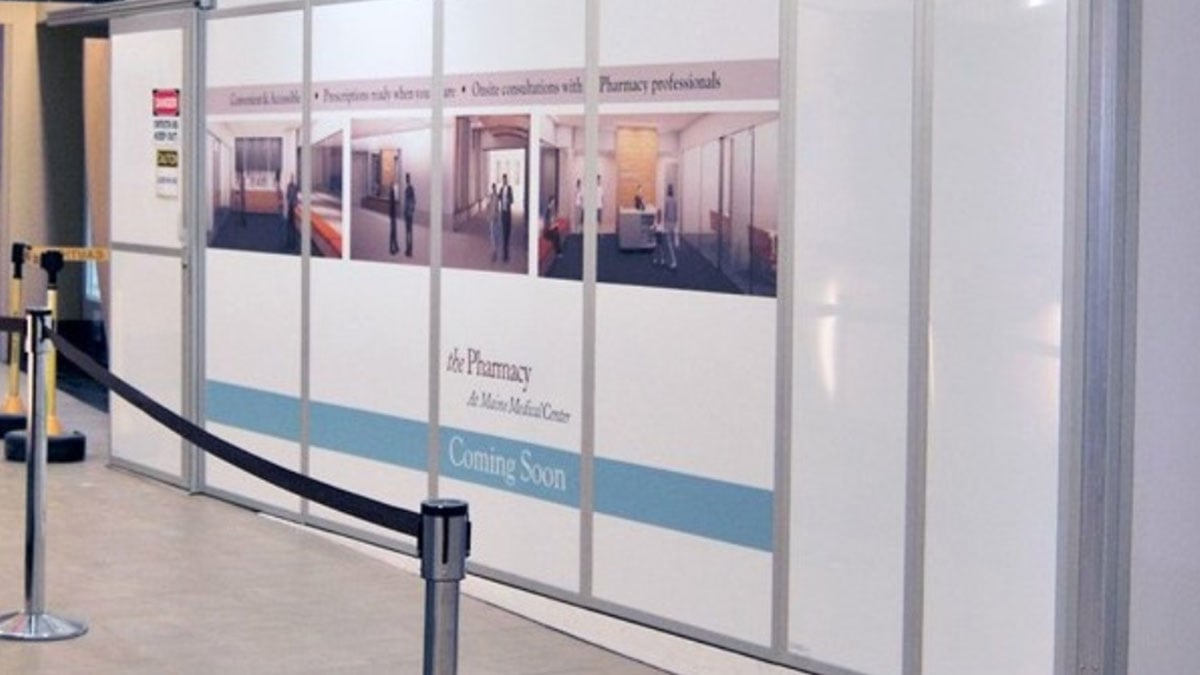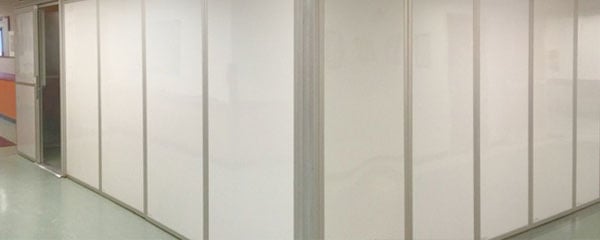Share this
The Best Temporary Containment for Construction Dust Control
by HEPACART on Apr 06, 2022

Unfortunately, buildings don’t last forever. Materials degrade and wear out. Miracle materials we once thought would make buildings safer turned out to be hazardous (asbestos being the best example). Plus, facilities that seemed like they’d be big enough forever suddenly feel cramped. But no matter the reason for your renovations, construction, or expansion, one thing is certain: It’s going to be dusty. So what’s the best way to control all that dust?
Temporary Drywall
You could build temporary walls. It’s a tried and true technique in home construction as well as commercial construction:
- Apply a thick, protective foam around the space where the wall will go.
- Cut 2x4’s into the length and width of your temporary wall.
- Make sure your 2x4’s are 3 inches shorter than the total height!
- Put in top and bottom plates.
- Nail the 2X4’s to the plates.
- Put in more studs. Make another run for 2x4’s if you have to.
- Drill in drywall panels.
- Seal gaps.
- Install baseboard.
There are several problems with this method that are especially problematic for health care facilities. First, it’s noisy. Second, it’s yet another wall that has to be torn down once it outlives its usefulness. Since tearing down this temporary wall will also create dust, it doesn’t really solve the problem.
Plastic Tents
Here’s a solution that requires far less material to put up. You can use disposable plastic rolls and rely on tape to hold it in place, even using a zipper to allow entry and exit. While plastic tents are cleaner to install and tear down, these sheets don’t block almost any noise. A plastic sheet would have to be 10mm thick to begin absorbing sound, and then it would be inflexible and not really work as an entry/exit point.
Then there’s the problem of durability. Plastic sheets are alright for a one-time use, maybe even a couple uses. But, as soon as holes start to appear, the sheets need to be patched or thrown away. Since dust containment is your goal, and hospitals need 100% containment for patient safety, this still isn’t an ideal solution.

What About a STARC® Systems RealWall™?
With a RealWall, your construction dust control is far easier and more cost effective. Plus, they’re completely ICRA Class IV compliant. Let’s go over why it’s the best option for putting up temporary walls.
RealWalls are Quiet
Soundproofing in a hospital is about more than getting rid of slightly irritating noises, it’s an essential part of patient safety. When loud construction sounds disrupt an otherwise quiet hospital, the result can be:
- Life saving orders are misheard
- Patients who need sleep are woken up
- Health care professionals who need to concentrate get distracted
- Visiting families or friends have difficulty enjoying time with loved ones
With a RealWall, sound is attenuated (that is, reduced) up to 50%. Plus, unlike with a temporary wall made of studs and drywall, there’s no loud hammering, sawing, or drilling taking place during installation.
RealWalls are Durable
STARC® guarantees their RealWalls with a 3 year warranty. This means you can use it over and over again for multiple construction projects and it won’t bend, scratch, or warp. RealWalls are made from aluminum and galvanized steel around a 1 inch thick foam core that does the heavy lifting in sound attenuation. Unlike polycarbonate walls, RealWalls are designed to withstand impacts without denting or breaking.
RealWalls are Attractive
You might not think about this one too much, but having an attractive temporary wall is a genuine benefit. If your hospital is hosting some VIPs, having RealWalls in place instead of sheets of plastic makes the facility look cleaner and more professional. RealWalls are clean, bright, and white to match the rest of your hospital’s appearance. They do an excellent job of masking the fact that on the other side is a construction zone!
RealWalls Save Money
Installation of RealWalls only requires two people. They can be set up quickly and quietly, unlike plastic that has to be taped and sealed off or temporary drywall partitions that need a crew to complete. And thanks to RealWalls being reusable for years, you won’t have to pay the construction team to construct a new wall every time there are renovations to be done. You can expect your RealWall to pay for itself after only 3 to 5 uses.
RealWalls Are Safe
RealWalls have an ASTM E84 Class A rating. In other words, RealWalls do an excellent job of containing fire and smoke. It wasn’t that long ago that there weren’t any temporary walls fire-rated for 1 hour. According to ASHE’s NFPA 241 guidelines, if you have a sprinkler system in place, you’re not required to have a 1 hour fire-rated wall. But if that system needs to be deactivated for any reason, that temporary wall could literally be a life saver.
RealWalls Contain Dust
For hospitals, this may be the most important factor. Construction dust and debris can contain some nasty stuff you don’t want your patients or staff to breathe. With RealWalls, you can set up a completely sealed barrier to protect the people in your hospital without inconveniencing the construction crew.
Protect Your Hospital with a STARC® RealWall™ from HEPACART®
Renovations have to happen, and those changes and improvements to the hospital are necessary. But protecting your people is also necessary. Protect them with a STARC RealWall! HEPACART is in the business of keeping lungs clean, and we help hospitals like yours do just that. Contact us to clear the air and get a RealWall in your facility!
Resources:

